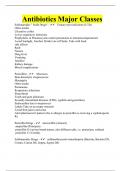CRIME, COMMUNITY SAFETY AND CRIME PREVENTION - SOC2061
Are Situational Crime Prevention Techniques Effective and Why?
Originally proposed by Ron Clarke, the five primary Situational Crime Prevention techniques are
derived from his own Crime Opportunity Theory and really set the foundation in society for many
manipulations made to our “immediate physical environment in a systematic and permanent
way.” (Clarke, 1983) Techniques include, street lighting, anti-robbery screens, uniforms, CCTV and
efficient queueing systems, all with the intention of limiting opportunities for crime, whilst
increasing the perception of risks to lower crime rates. Ultimately, by drawing on existing
research studies, this paper will be analysing how effective different methods have been in
different criminal aspects of society. Determining how effective the qualities of the prevention
techniques are when still being adapted and applied to modern society and considering the
disadvantages of the theory which have occurred as a product of the measures, such as the
Broken Windows theory and the Displacement theory.
The Crime Opportunity theory is based on the belief that opportunity allows criminally disposed
individuals, the freedom to take advantage of vulnerable aspects in society and even encourages
them, to seek more opportunities to commit crime due to these existing temptations. The
information was accumulated from research at the British Home Office Research Unit in the
1970s, gaining merit since mainly for being applicable to central, governmental and local levels of
crime due to its pragmatic approach. It could also be argued that Clarke’s approach is effective
due to its practicality and timelessness, being the current core form of methodology, with the
focus being on eliminating the interaction between disposed offenders and a situation with
opportunity.
One of the techniques this paper will be analysing is an ‘Increase in Effort’, researched by
Winchester and Jackson (1982) in their ‘Residential Security: Containment and Displacement of
Burglary’ study2 (Allatt, P. 1982). The study was conducted in a highly deprived area where
implementation and restructuring of the environment to promote ‘target hardening’ was
predicted to have a huge impact. The aim of increasing the difficulty in committing crimes, can
also make crime more detectable; in this case, we can see first-hand the act of ‘target-hardening’
as there was high-key installation of secure and tamper-proof windows and doors fitted with
alarms. The results showed a brief pause and then slow reduction in burglary, which to some
extent, proved their hypothesis.
However, whilst their aim of a reduction in burglary was successful, reports indicate that a
proportion of the burglary was simply displaced into other adjacent areas, which highlights a key
criticism and argues that crime prevention measures are geographically limited due to
‘displacement’ (defined as a resulting factor of frustration due to the preventative measures). It
theorises that the offender will just use different means and mechanisms to alter one of the
following factors; time, place, method or form of offence. Therefore, Winchester and Jackson
argue that careful consideration surrounding ethical, economic and maintenance concerns need
to be addressed in advance to environmental manipulation “the economic and ethical questions of
containment and displacement. Such questions also lead to major political and social implications of
designing out crime and their environmental effects” 2 (Allatt, P. 1982) Clarke himself described
displacement as the ‘Achilles heel’ of situational crime prevention, so despite emphasis that
displacement is not inevitable, the theory is not “fault-proof” as demonstrated in this study; the
crime was displaced onto another demographic.
Furthermore, an underlying disadvantage, which allows anomalies, was noted as “The Home Office
system of classification makes no distinction between burglary and attempted burglary (…) this was
necessary in order to assess the effectiveness of the security devices in preventing entry to the
1





